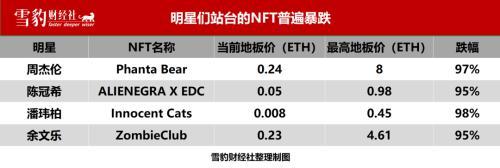看看俄罗斯小学数学都教什么?四至六年级数学大纲
众所周知,俄罗斯是个数学强国,在近代一百年间,曾涌现出多位杰出的数学家。在欧美的大学和数学研究所里,前苏联时代移民过去的大数学家也比比皆是。
那么,俄罗斯是怎么培养出这么多数学人才的?这要归功于坚实的数理基础教育。
今天,我们来看看俄罗斯在小学阶段的课程大纲。小学四至六年级。
俄罗斯四年级
Calculation-larger numbers
The numbers 100 to 999
Addition
Addition up to the number 999
Subtraction
Subtraction with borrowing
Subtraction of two-digit numbers Involving comparison.
Subtraction up to the number 999 using the renaming method
Multiplication
Multiplication – important facts.
Place value
The numbers 1000 to 9999
The multiplication sign
Strategies for division
Calculations
Multiples of 10 up to 100
Addition
Subtraction up to the number 10
Problems
Solve and record division using known facts and sharing
Division
Division with and without a remainder
Length
Using the metre as a formal unit to measure perimeter
Using the formal unit of the centimetre to measure length and perimeter
Read and calculate distances on a map using the formal unit kilometre
Compare and convert formal units of measurement
Area
Introduction to the square centimetre
Comparing and ordering areas.
Weight/mass
The kilogram
The gram and net mass
2-D shapes
Using the prefix to determine polygons
Spatial properties of quadrilaterals
Recognise and name triangles
Tessellating 2-D shapes
Use grids to enlarge/reduce 2D shapes
3-D shapes
Recognise and name pyramids according to spatial properties
Angles
Measure and classify angles
Lines and angles
Mapping and grid references
Main and intermediate compass points
Informal coordinate system
Capacity
The relationship between the common units of capacity, the litre and the millilitre
Using the cubic cm and displacement to measure volume and capacity
Using the cubic cm as a standard unit of measurement for volume and capacity
Converting between volume and capacity using kilolitres and litres
Estimate, measure and compare the capacity of containers
Converting between volume and capacity using millilitres and litres
Time
Analogue – Telling time – minutes in the hour
Comparing analogue and digital time
Units of time
Minutes to the hour
Minutes past the hour
AM and PM time
Decimals
Introduction to decimals
Comparing and ordering decimals to two decimal places
Decimals with whole numbers 10th and 100th
Adding decimals to two decimal places
Subtracting decimals to two decimal places
Using decimals – shopping problems
Using decimals to record length
Rounding decimals
Fractions
Using fractions 1/2, 1/4, 1/8 to describe part of a whole
Using fractions 1/2, 1/4, 1/8 to describe parts of a group or collection
Comparing and ordering fractions
Finding equivalent fractions
Mixed numbers (mixed numerals)
Fractions 1/5, 1/10, 1/100
Percentages
Introduction to percentages, including relating common fractions to percentages
Changing fractions and decimals to percentages using tenths and hundredths
俄罗斯五年级
Place value
The numbers 1000 to 9999
Addition
Addition up to the number 999
Subtraction
Subtraction up to the number 999 using the renaming method
Subtraction involving four digit numbers and beyond using the renaming method.
Counting and numeration
The numbers 10 000 to 99 999
Addition to 9999 and beyond
Multiplication
Multiples and factors of whole numbers
Multiplication using extended algorithms.
Division
Division with and without a remainder.
Dividing two and three digit numbers by a single digit number.
Multiplication
Multiplication by 2 and 3 digits
Multiplying 2-digit numbers by multiple of 10
Multiplying 3 and 4-digit numbers by multiples of 100
Time
AM and PM time
24 hour time
Average speed
Angles
Measure and classify angles
Lines and angles
Mapping and grid references
Main and intermediate compass points
Informal coordinate system
2-D shapes
Recognise and name triangles
3-D shapes
Recognise and name pyramids according to spatial properties
Recognise and name prisms according to spatial properties
Viewing 3-D shapes.
Tessellating 2-D shapes
Use grids to enlarge/reduce 2D shapes
Data
Line graphs.
Pie and bar graphs.
Length
Read and calculate distances on a map using the formal unit kilometre
Compare and convert formal units of measurement
Area
Introduction to the square centimetre
Comparing and ordering areas
Larger areas: square metre, hectare, square kilometre.
Volume
Using the cubic centimetre to measure volume
Capacity
The relationship between the common units of capacity, the litre and the millilitre
Using the cubic cm and displacement to measure volume and capacity
Using the cubic cm as a standard unit of measurement for volume and capacity
Converting between volume and capacity using kilolitres and litres
Estimate, measure and compare the capacity of containers
Weight/masss
The kilogram
The gram and net mass
Decimals
Introduction to decimals
Comparing and ordering decimals to two decimal places
Decimals with whole numbers 10th and 100th
Adding decimals to two decimal places
Subtracting decimals to two decimal places
Using decimals – shopping problems
Using decimals to record length
Rounding decimals
Adding decimals with a different number of decimal places
Subtracting decimals with a different number of places
Multiplying decimals by 10, 100 and 1000
Multiplying decimals by whole numbers
Dividing decimals by 10, 100 and 1000
Dividing decimal fractions by whole numbers
Fractions
Finding equivalent fractions
Mixed numbers (mixed numerals)
Fractions 1/5, 1/10, 1/100
Subtracting fractions from whole numbers
Adding and subtracting fractions with the same denominator
Percentages
Introduction to percentages, including relating common fractions to percentages
Changing fractions and decimals to percentages using tenths and hundredths
Sign word problems
Solving Word Problems by recognising Sign Words
Equations
Problem solving strategies
Number problems
Problems with numbers.
Money
Problems involving money
俄罗斯六年级
Counting and numeration
The numbers 10 000 to 99 999
Addition to 9999 and beyond
Seven digit numbers
Subtraction
Subtraction involving four digit numbers and beyond using the renaming method.
Multiplication
Multiples and factors of whole numbers
Multiplication using extended algorithms
Multiplication by 2 and 3 digits
Multiplying 2-digit numbers by multiple of 10
Multiplying 3 and 4-digit numbers by multiples of 100
Multiplying 2-digit numbers by 2-digit numbers
Multiplying 4-digit numbers by 3-digit numbers
Division
Division with and without a remainder.
Dividing two and three digit numbers by a single digit number.
Divide whole numbers by a 2 digit divisor
Division/
repeat subtraction
Repeated subtraction with divisors less than 20 with no remainders
Repeated subtraction by multiples of 10 with divisors less than 20 with no remainders
Repeated subtraction by multiples of 2, 3 and 4 with divisors greater than 20 with no remainders
Repeated subtraction by multiples of 1,2 and 3 with divisors less than 20 with remainders
Repeated subtraction by multiples of 10 with divisors less than 20 with remainders
Repeated subtraction with divisors greater than 20 with remainders as fractions
Repeated subtraction with divisors less than 35 with some remainders
Repeated subtraction with divisors less than 55 with dividends of 3 and 4-digits with some remainders
Repeated subtraction with divisors greater than 50 with dividends of thousands and some remainders
Using divide, multiply and subtraction in the bring down method
3-D shapes
Recognise and name pyramids according to spatial properties
Recognise and name prisms according to spatial properties
Recognise nets for prisms, pyramids, cubes and cones
Area
Introducing the rules for finding the area of a rectangle and a parallelogram.
Larger areas: square metre, hectare, square kilometre.
Problems with area.
Volume
Introducing the formula for volume
Using the cubic metre to measure volume.
Solving Problems about Volume
Capacity
Converting between volume and capacity using millilitres and litres
Weight/mass
The tonne – converting units and problems
Problems with mass
Decimals
Decimals to three decimal places
Adding decimals with a different number of decimal places
Subtracting decimals with a different number of places
Multiplying decimals by 10, 100 and 1000
Multiplying decimals by whole numbers
Dividing decimals by 10, 100 and 1000
Dividing decimal fractions by whole numbers
Dividing numbers by a decimal fraction
Percentages
Introduction to percentages, including relating common fractions to percentages
Changing fractions and decimals to percentages using tenths and hundredths
Changing percentages to fractions and decimals
Fractions
Improper fractions
Subtracting fractions from whole numbers
Adding and subtracting fractions with the same denominator
Multiplying and dividing to obtain equivalent fractions
Reducing fractions to lowest equivalent form
Comparing and ordering fractions greater than (>) 1
Multiplying fractions by whole numbers
Fractions of whole numbers
Sign word problems
Solving Word Problems by recognising Sign Words
Equations
Problem solving strategies
Number problems
Problems with numbers
Money
Problems involving money
Volume/capacity
Problems with volume/capacity
对比上期的一到三年级教学内容,我们会发现量明显有所增加,但从深度上说并没有急于拉高难度,仍然给小学生足够的时间消化巩固基础知识。
再看看新加坡,我们以前发过的新加坡数学大纲,小学的内容也不难。其实,这些国家的模式是先松后紧,在数学启蒙阶段打好基础,做好从具体到抽象的反复训练,强调理解而不是硬记,或许可以给我们焦虑的家长些启发。























评论